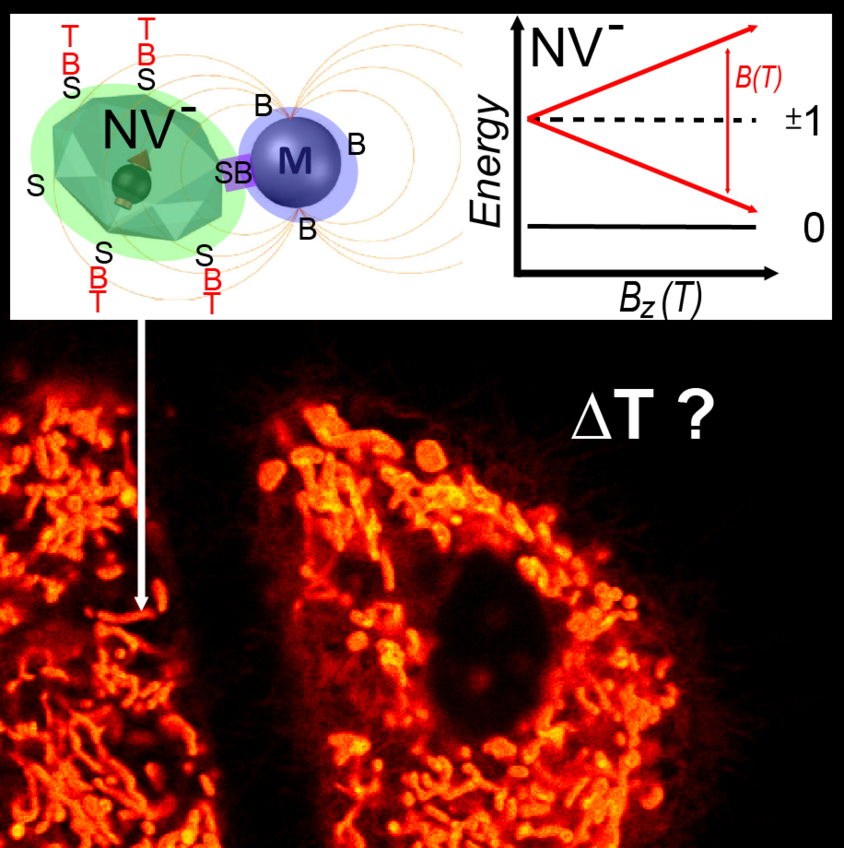Innovation Area - Sensing technology to control quantum systems
Directed quantum sensing of elevated temperatures at active zones inside a single living cell
A quantum thermometer to determine the heat losses of the ATP-producing mitochondria
The human body temperature is stabilized at 37°C. However, localized heat generation within an individual cell is a fundamental but highly controversial scientific problem. Our goal is to build a precise intracellular nanothermometer for localized temperature (T) measurements within a single living human cell. Therefore, a biocompatible quantum sensor with 10 to 100 mK resolution is synthesized based on a hybrid particle comprising an Nitrogen-vacancy (NV-) color center in a nanodiamond plus an attached CuNi nanomagnet with a tuned Curie transition around TC = 37°C. The exceptional sensitivity of this nanothermometer is based on the T-induced magnetic phase transition and the quantum sensing of the local magnetic field by the NV- center.
For the intracellular measurements, this nanothermometer requires (a) a magnetic nanoparticle which has to be attached permanently and in closest proximity to the fluorescent nanodiamond, (b) the post-recording temperature calibration of each individual intracellular nanothermometer by fast denaturation of the cells, and (c) an optimized celluar uptake mechanism to specifically target different cellular organelles (i.e. the mitochondria, the nucleus, the cytosol, the endosomes or lysosomes). Uptake and colocalization of the NV- quantum sensor with the active zones in the cell are confirmed by dual-color superresolution microscopies (STED, STORM, SIM). The main goal is the accurate monitoring of elevated temperatures of active mitochondria being the “power houses” of the human cell.






